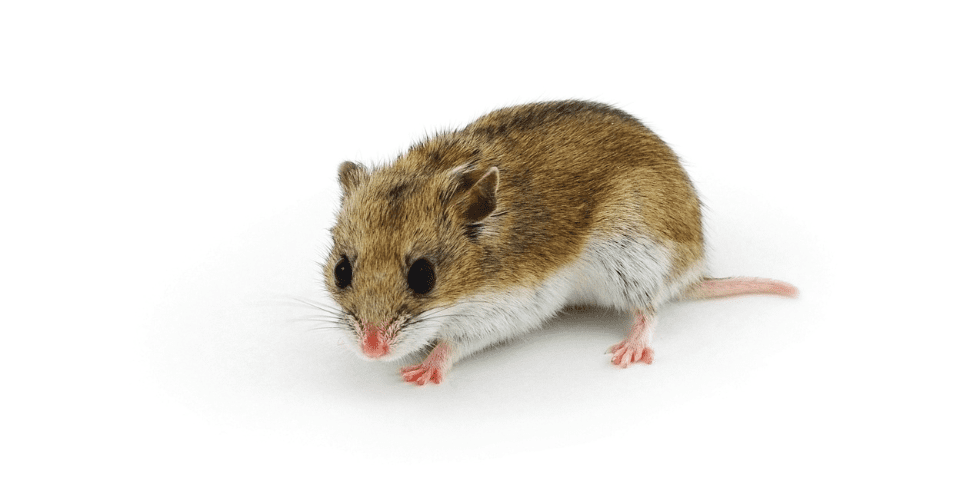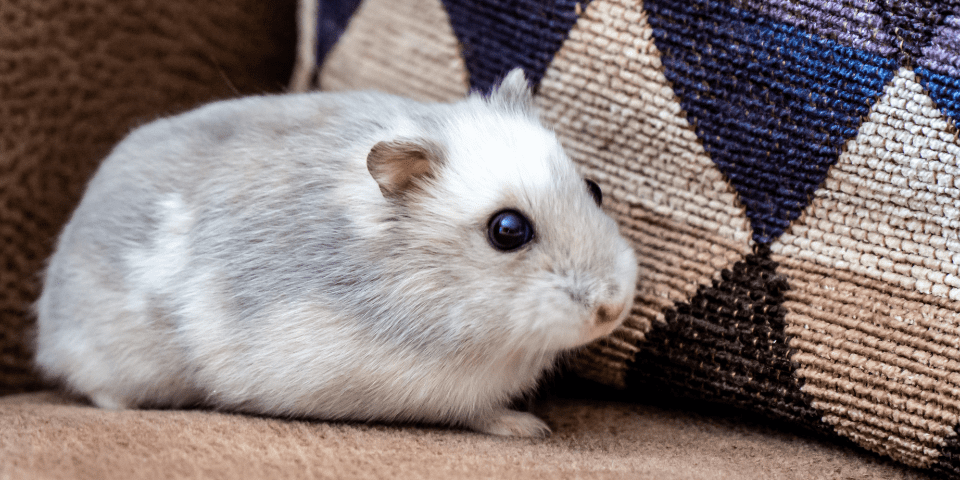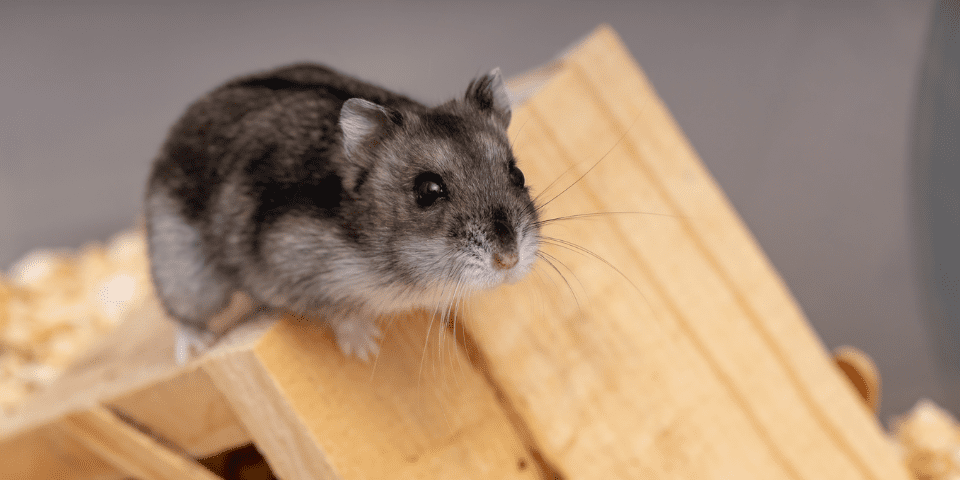by Dianne Cook, LVT, and Kellie Hayden
Updated: December 4, 2023
Hamsters are adorable, diminutive animals with big, colorful personalities. Beloved for their adorable looks, entertaining antics, and winning personalities, different kinds of hamsters make great small pets alike for households! If you’re interested in adding a hamster to your family, we recommend starting your discovery process by learning all about different hamster breeds. In this article, you’ll learn more about interesting hamster facts and unique characteristics of different types of hamsters.
Fun Hammy Facts
- Did you know that hamsters live for about 2 years on average?
- Hamsters are also master escape artists. Trust us, these sweet little pets would have made Harry Houdini green with envy!
- Hamsters are nocturnal and shouldn’t be bothered when sleeping.
- Hamsters are adventurous and curious by nature!
- Hamsters LOVE grass hays for nesting.
- Avoid feeding your pet mixes with nuts and seeds, as they tend to be selective eaters.
- Hamsters need to have a diet supplemented with a variety of grains, fats, proteins, and produce.
Hamster Breeds
Many prospective hamster parents are surprised to learn that there are multiple breeds of hamsters common throughout the world. Throughout the hamster family, you will find a variety of sizes, colors, and temperaments. What all hamster breeds have in common is that they are adorable and full of energy.
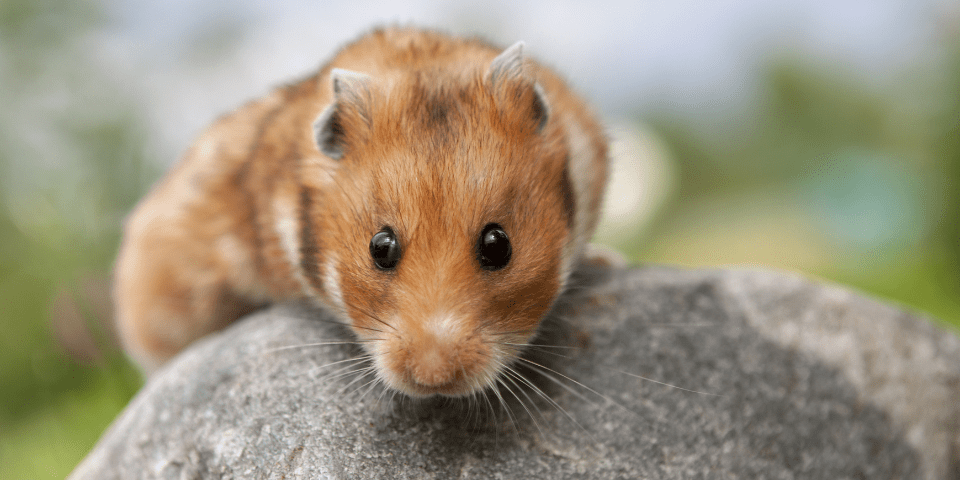
1. Syrian Hamster
Syrian Hamster Facts:
- Scientific Name: Mesocricetus auratus
- Subfamily: Cricetinae
- Lifespan: 2-3 years
- Length: 5-7 inches
- Weight: 3-5 ounces
- Personality: Solitary but friendly
Syrian hamsters are what many people typically think of when they see or hear the word “hamster.” Measuring about 5-7 inches long, weighing anywhere from 3-5 ounces, and originally hailing from the Middle East, these adorable pets are one of the larger breeds in their species.
Syrian hamsters have many color variations and patterns, including gold, black, white, cream, tortoiseshell, banded, and piebald. Some Syrian hamsters have shorter hair (also known as Golden hamsters) while others have longer, denser fur patterns (also known as Teddy Bear or hamsters).
Syrian hamsters should be housed alone due to their highly territorial nature. They are also nocturnal and will, therefore, spend the majority of the daytime sleeping.
Due to their size, Syrian hamsters typically do better in larger living environments.
Syrian Hamster Care Tips:
- Syrian hamsters (and other hamster species) can develop bacterial issues in their intestines so regular cage cleanings are important.
- When supplementing your Syrian’s diet with fresh fruit and vegetables, make sure to provide them in a separate bowl and remove uneaten food before it starts to spoil.
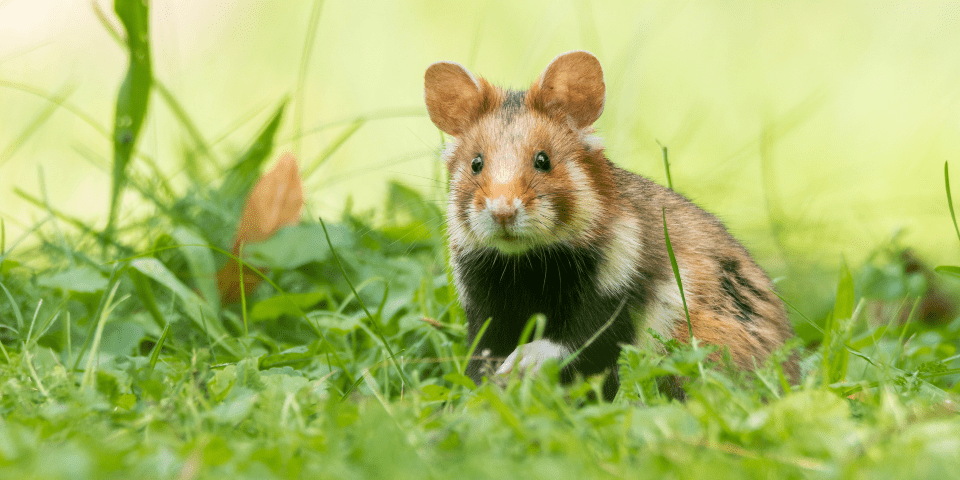
2. European Hamster
European Hamster Facts:
- Scientific Name: Cricetus cricetus
- Subfamily: Cricetinae
- Lifespan: 2-8 years
- Length: 8-14 inches
- Weight: 8-16 ounces
- Personality: Solitary and wild
Less commonly known in the Americas, the European hamster boasts a little black belly instead of a white one like many of its wild or domestic cousins.
European hamsters are the largest known species of hamster, growing 8 to 11 inches long and weighing as much as 1 pound!
While the majority of these animals remain wild and aren’t very often seen as pets, these adorable hams were first documented in 1679 and have a long and rich history in central and eastern Europe as well as Russia.
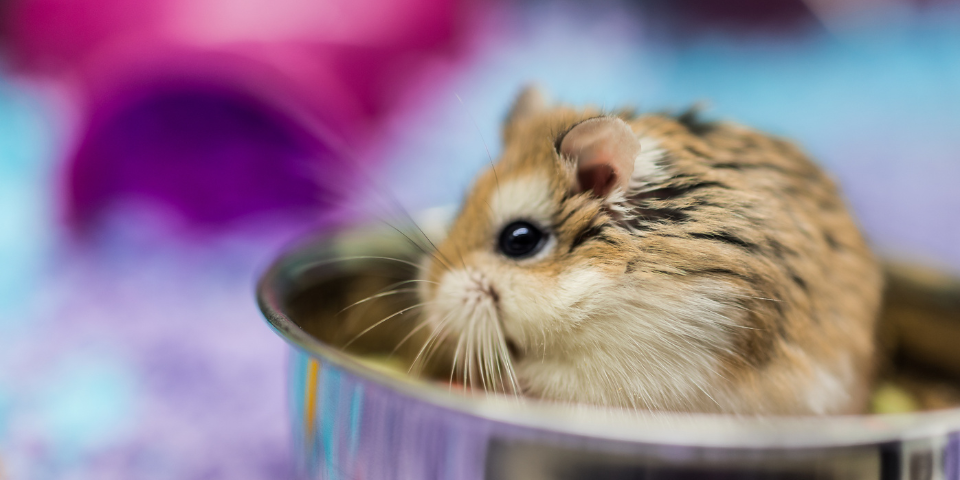
3. Roborovski (aka Robo) Dwarf Hamster
Roborovski Hamster Facts:
- Scientific Name: Phodopus roborovski
- Subfamily: Cricetinae
- Lifespan: 2-3 years
- Length: 2 inches
- Weight: 20-25 grams
- Personality: Busy and easily stressed
If you’re looking for the smallest, fastest hamsters known to humankind, look no further than the Roborovski dwarf hamster!
These long-named, little-bodied Robos may not tend to be as affectionate as the Syrian breed. Usually measuring at 2” or less, their size paired with their speed make them difficult to handle, making them less than ideal for families with small children.
Because of their small size and speed, Roborovski dwarf hamsters can be housed in long aquariums with plenty of space for branches and other types of structure to create hiding places.
Roborovski Dwarf Hamster Care Tips:
- Robo hamsters like to use sand to clean themselves and keep their coats healthy, but be sure to provide dust-free sand specifically for hamsters.
- Be mindful when handling Robo hamsters as they are quick and easily stressed.
4. Chinese Hamster
Chinese Hamster Facts:
- Scientific Name: Cricetulus griseus
- Subfamily: Cricetidae
- Lifespan: 2-3 years
- Length: 3-5 inches
- Weight: 1-2 ounces
- Personality: Nervous but easily tamed
Originally from the deserts of China and Mongolia, the Chinese hamster differs in looks from many of its relatives due to its tail. While not as long as a gerbil or mouse tail, it does make this mid-size species easy to tell apart.
Domesticated Chinese hamsters are typically spotted white or grayish-white with a dark stripe running down the length of their backs.
Chinese hamsters aren’t as friendly to handle as some other hamster breeds. They are solitary and tend to prefer hiding in enclosures or burying themselves beneath their bedding.
Chinese Hamster Care Tips:
- Chinese hamsters prefer to live alone and do better in a larger habitat where they have plenty of room to dig and play.
- Taming your Chinese hamster is possible but requires consistent, gentle handling from a young age.
5. Winter White Dwarf (Djungarian) Hamster
Winter White Dwarf Hamster Facts:
- Scientific Name: Phodopus sungorus
- Subfamily: Cricetinae
- Lifespan: 1-2 years
- Length: 3-4 inches
- Weight: 1-2 ounces
- Personality: Social and playful
A little larger than Roborovskis, Winter White Hamsters are also a very popular hammy breed. Known for being good-natured, they originated from Russia and are named due to the fact that they often turn almost completely white during the winter months.
Winter Whites also go by many names, including Djungarian hamster, Russian dwarf hamster, and Siberian hamster.
Winter white dwarf hamsters are typically gray or brown with a dark stripe down the length of their backs. They are also similar in appearance to Campbell’s dwarf hamsters.
Winter White Hamster Care Tips:
- Winter white dwarf hamsters enjoy a very active lifestyle so it’s important to provide a long tank/aquarium with plenty of room for climbing and exercising.
- Some Winter Whites may be able to be housed with a same-sex companion, but this needs to be done carefully. Hamsters in general are solitary animals and paired housing should be done only be experienced owners, as pet parents need to watch for signs that a duo may need to be separated. The more hamsters you have living together, the larger the enclosure needs to be in order to avoid territorial disputes and stress.
6. Campbell’s Dwarf Hamster
Campbell’s Dwarf Hamster Facts:
- Scientific Name: Phodopus campbelli
- Subfamily: Cricetinae
- Lifespan: 1-2 years
- Length: 2-4 inches
- Weight: 1-2 ounces
- Personality: Friendly but Territorial
Campbell’s dwarf hamsters, sometimes also known as Russian dwarf hamsters, are similar to Winter white hamsters with grayish fur and a dark stripe down their backs. However, their coat is usually longer than those of the Winter white hamster.
Campbell’s hamsters are typically easy to care for and make great pets, especially if they’re socialized at a young age. Handling can be tricky as they are tiny and fast, so be sure you’re close to the ground when holding them.
As with other hamsters, Campbell’s dwarf hamsters do better in a larger enclosure, preferably an aquarium or tank that is well-ventilated by a mesh lid. They love to play and enjoy nesting, toys that they can safely chew on, and wire-free exercise wheels.
Campbell’s Dwarf Hamster Care Tips:
- Campbell’s dwarf hamsters thrive in habitats that provide a solid surface beneath their feet (no wire cages).
- Diabetes is a common health problem with Campbell’s dwarf hamsters so if you notice increased urination and thirst, it’s a good idea to contact your vet.
7. Turkish Hamster
Turkish Hamster Facts:
- Scientific Name: Mesocricetus brandti
- Subfamily: Cricetinae
- Lifespan: 1-4 years
- Length: 4-7 inches
- Weight: 2-4 ounces
- Personality: Solitary and aggressive
Similar to the Syrian but slightly smaller, Turkish hamsters are not as domesticated as other hamster breeds so they’re not often kept as pets due to their aggressiveness. They can be found in the wild throughout areas in Turkey, Lebanon, and Israel.
Due to their color pattern and snout shape, they are oftentimes mistaken for mice.
Also known as Brandt’s hamsters, Turkish hamsters like to burrow in the ground, creating a network of tunnels for hiding, feeding, and sleeping.
Conclusion
Hamsters are amazing creatures that bring joy to pet parents all over the world. Though these unique pets take up less space than rabbits, guinea pigs, or other larger species, they bring no less joy to the households of those who love and care for them. While the many breeds of hamsters covered in this article share similarities, they are each unique and special!

